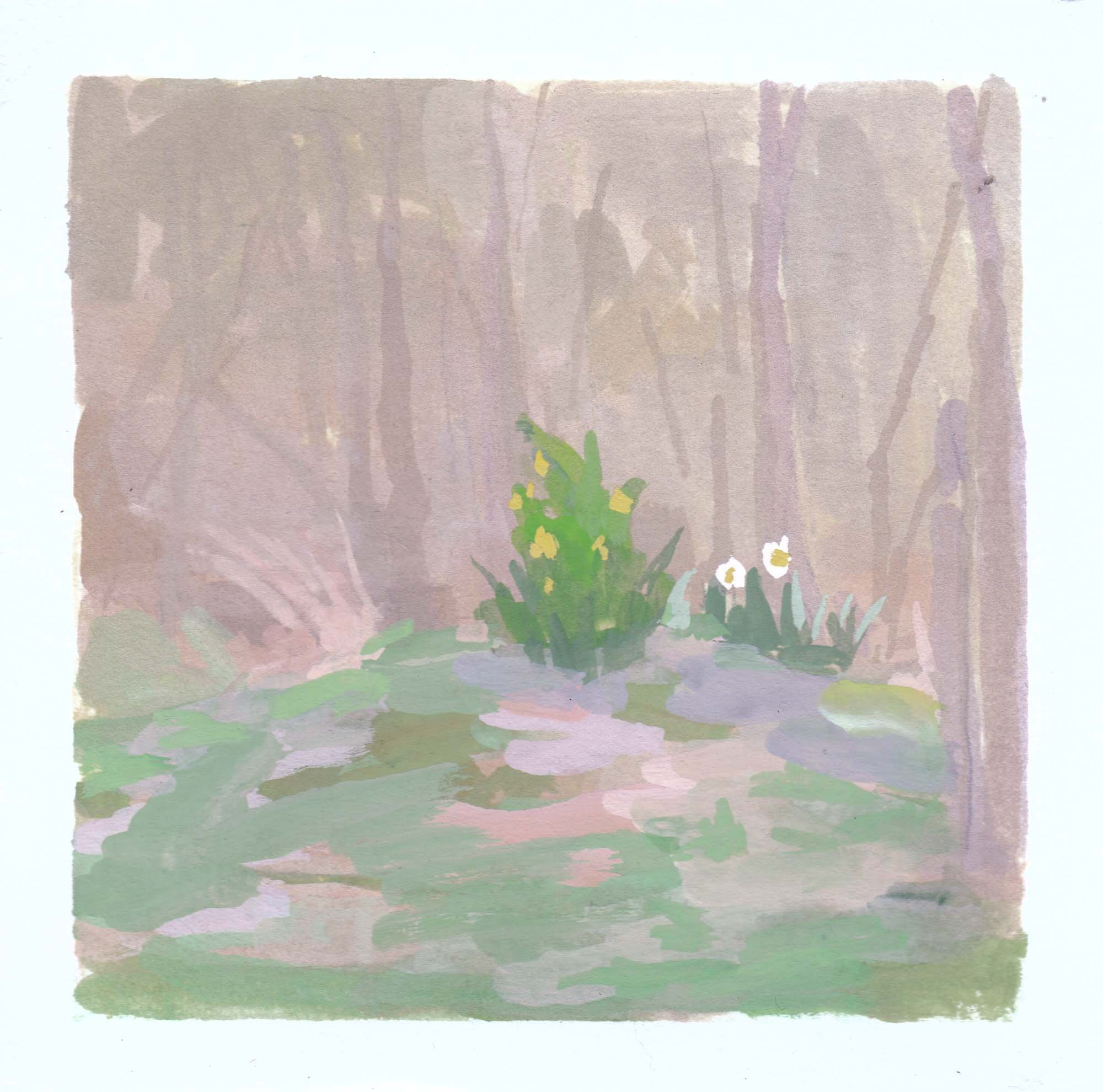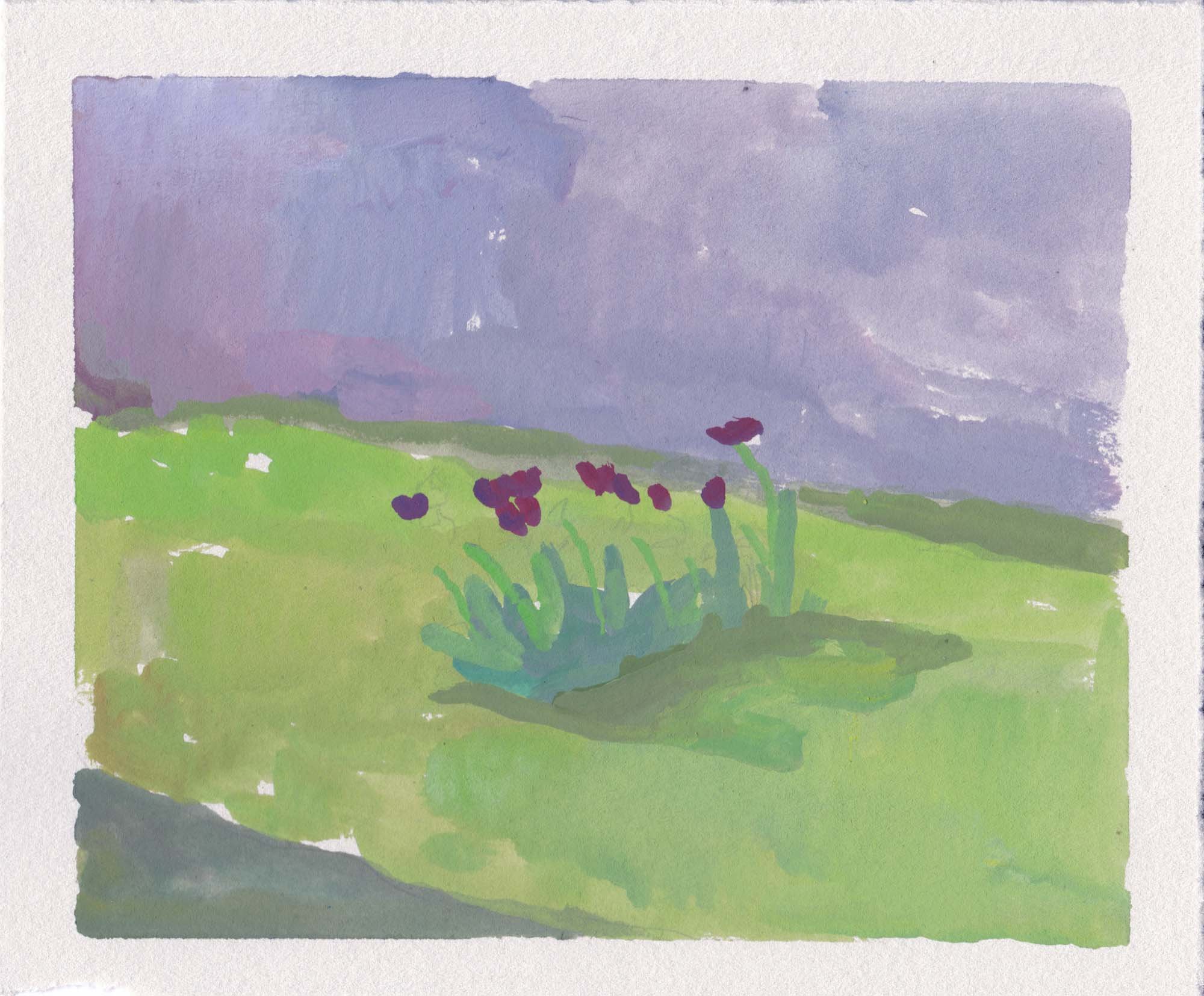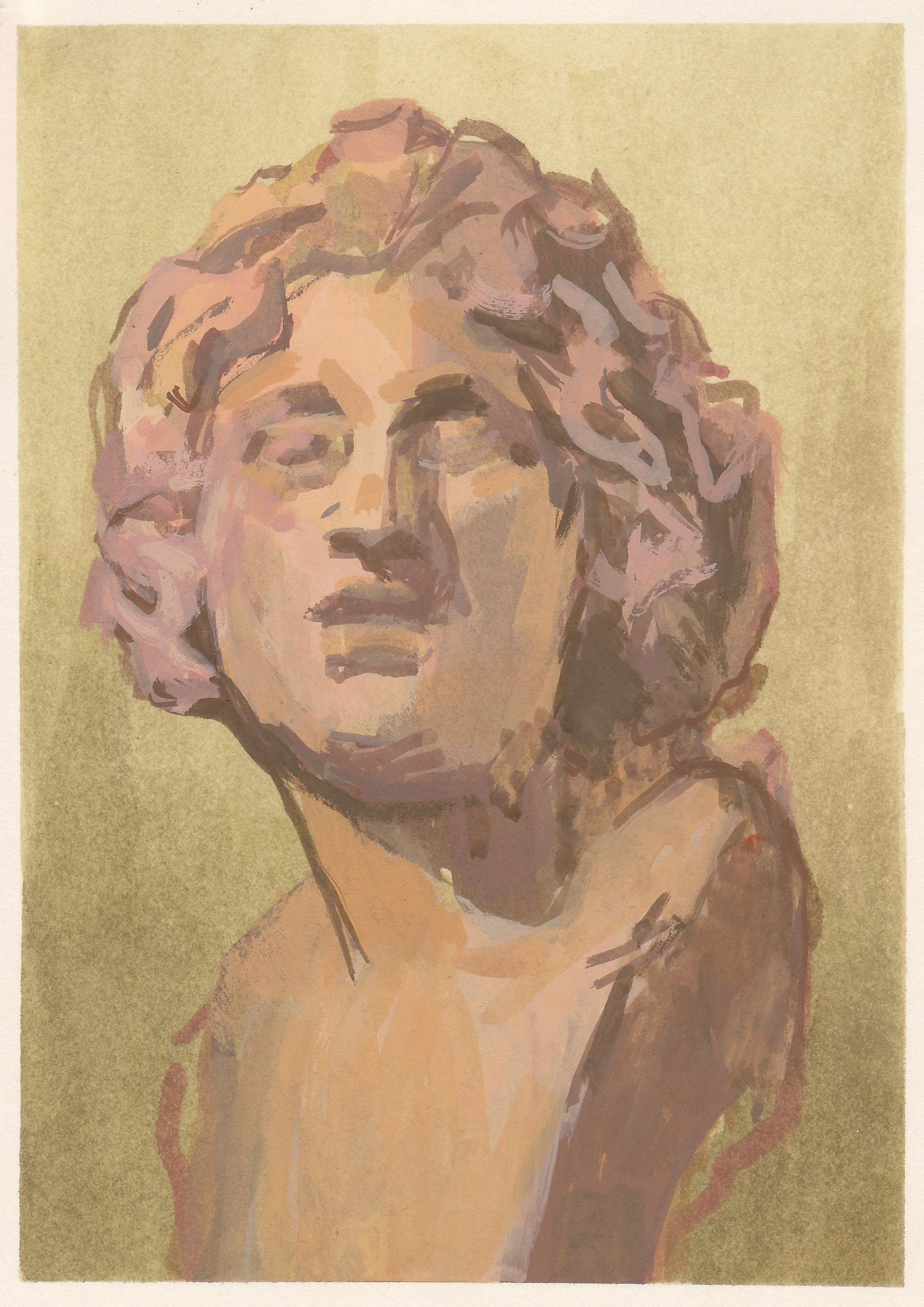My very first garden took place in a suburban New Jersey backyard, a small plot flanked by a swing set, our family’s pet cemetery, and a grapevine of unknown origin. I planted watermelon and squash seeds then cut earthworms into small pieces with a shovel because I thought it would multiply them. I was around ten years old and due to the general lack of care that comes with that age, completely abandoned the garden after a few days. Several weeks later, my mom was astonished to find a watermelon and what she still claims is the largest zucchini she’s ever seen. The experience of witnessing the literal fruits of my labor ignited a love of gardens from that point on. During art school, this interest grew into something I could connect to my painting practice in a meaningful way.
La Terrasse at Vasouy, The Lunch, 1901. By French painter Edouard Vuillard
Gardens have been a source of inspiration for artists throughout history, and it is no surprise that painters, myself included, have been drawn to these tranquil and visually captivating spaces. Admired from afar, gardens are filled with vibrant colors, shapes, and textures- all the things that tend to make great subject matter for observational painters. My thoughts and personal affinity go to artists like Bonnard and Vuillard, whose canvases often portrayed French society against lush floral backdrops. Mary Cassatt brought her own touch to this format, depicting moments with more of a domestic feeling. In these paintings we see her family sewing, reading, and simply being together in her own garden in the countryside of France.
Lydia Crocheting in the Garden at Marly, 1880. By Mary Cassatt.
Gardens can also be rich in symbolism and metaphor; the lotus of Ancient Egypt is thought to be the first flower represented in the arts. For them it was another symbol for the sun and a sort of daily rebirth. Later in art history, specific flowers were depicted in highly detailed still life paintings to convey ideas like love, death, wealth, and creativity. For me these paintings are technically impressive but lack the tactile connection I have to plants and the earth. They feel observed out of context rather than being in the garden.
Fragment of a Tomb Painting with Seated Woman Holding a Lotus. Unknown ca. 1539-1425 B.C.E. (From the Brooklyn Museum collection.)
Bouquet, 1599 by Jan Brueghel the Elder (1568–1625)
Because I am a gardener, I find myself thinking more about artists that share this working connection to gardens. Perhaps the most famous example of this is Monet and his gardens at Giverny. The grounds themselves are works of art. Free rambling borders and colors along with his pond were crafted over decades and served as his studio outdoors. These spaces inspired some of his most iconic works like the water lily series. Although these paintings are not my personal favorites, the lily pad room at MOMA has literally brought me to tears unexpectedly on more than one occasion. I have no explanation other than to think there is some deep natural force imbued in these works, a direct connection to Monet's beautiful garden.
Installation view of the gallery "Claude Monet’s Water Lilies" at MoMA
Gardens are closely intertwined with the arts in the sense that we are concerned with shapes and color, working towards a result that requires patience and trust in the outcome. Like painting, gardening is a slow process that requires dedication and care. In my current painting practice, the emergence of spring flowers suggests I can soon return to painting outdoors- an activity I don’t do in the cold of winter. Gardens also tie into the sense of nostalgia and the familiar in my work. There are certain flowers that grow at my mom’s house each season that come from generations past, like the irises and lilies gifted from long gone family members. They surround a Mother Mary statue that belonged to my great grandmother and connect the present to that ancestry. My mom decorates each summer with red wax begonias, and I will forever think of her when I see them.
My own current garden is very new and in-progress, a blank slate situation for which I have a grand vision. Most of my contributions are edible and I am slowly crafting floral beds and walkways- things that feel like paint and sculpture in many ways. I am also learning what flowers and perennials others before me chose to plant, my favorite of which are a patch of incredibly dark tulips that I have painted several times this season. As this garden develops over time, the paintings I create will share the moments of its growing.
Related to this post, I just released a new collection of garden paintings!

































